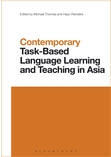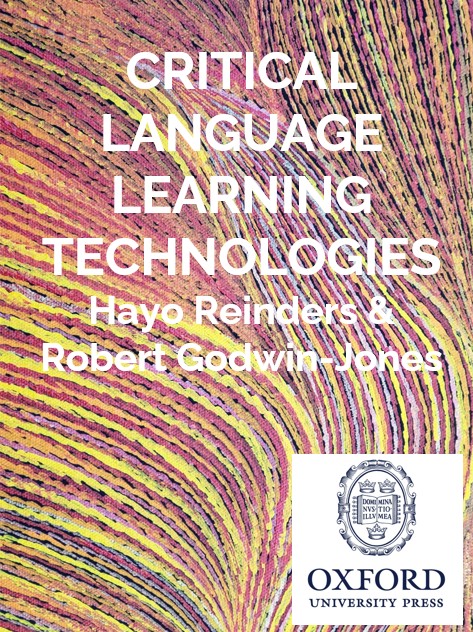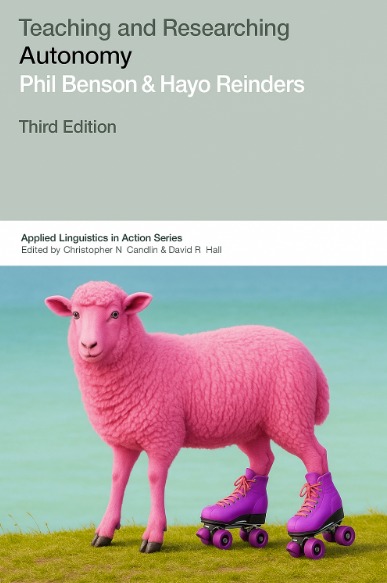Books > TBLT in asia
Reinders, H. & Thomas, M. (Eds.). (2014). TBLT in Asia: Challenges, opportunities and future directions. Bloomsbury.

Table of contents
Foreword
Professor David Nunan
Introduction
Michael Thomas, University of Central Lancashire, UK
SECTION I: THE SOUTH-EAST ASIAN CONTEXT: PHILOSOPHY AND IMPLEMENTATION
Chapter 1
Task-Based Language Teaching in the Asian Context: Where Are We Now and Where are We Going?
Chun Lai, University of Hong Kong, HK
Chapter 2
Exploring Ways to Accommodate Task-based Language Teaching in Chinese Schools
Shaoqian Luo, The Chinese University of Hong Kong, HK
Yafu Gong, English Education Research Center, China
Chapter 3
Bridging Task-Based Language Teaching and Communicative Language Teaching in Cambodia: A Case
Study of an Integrated TBLT and CLT Program
Nicole Takeda, Bayon English Academy, Cambodia
Chapter 4
Applications and Implications of TBLT in Thailand
Punchalee Wasansomsithi, Chulalongkorn University, Thailand
SECTION II: FOCUSING ON THE LEARNER
Chapter 5
Empowering University Students For The Global Workplace: A Multi-Modal, Task-Based Project
Brad Blackstone, National University Singapore, Singapore
Radhika Jaidev, National University Singapore, Singapore
Chapter 6
‘Old Wine in New Bottles’: Two Case Studies of TBLT in Vietnam
Nguyen Gia Viet, Ha Tinh University, Vietnam
Le Van Canh, Vietnam National University, Vietnam
Roger Barnard, University of Waikato, New Zealand
Chapter 7
TBLT in the Primary Schools of South China
Yuefeng Zhang, Hong Kong Institute of Education, HK
Chapter 8
Tasks for language learners in Yangon
Daniel Sang, Starfish Language and Business, New Zealand
Marilyn Lewis, University of Auckland, New Zealand
SECTION III: TEACHERS’ PERSPECTIVES
Chapter 9
Preparing for Tasks in Vietnamese EFL High School Classrooms: Teachers in Action
Bao Trang Thi Nguyen, Victoria University Wellington, New Zealand
Jonathan Newton, Victoria University Wellington, New Zealand
David Crabbe, Victoria University Wellington, New Zealand
Chapter 10
Teachers’ Perceived Difficulty in Implementing TBLT in China
Shaoqian Luo, The Chinese University of Hong Kong, HK
Chapter 11
Gaining Acceptance of Task-Based Teaching During Malaysian Rural In Service Teacher Training
Stephen Hall, Sunway University, Malaysia
SECTION IV: TECHNOLOGY
Chapter 12
TBLT and Technology in an Asian Context: The Case of Japan
Michael Thomas, University of Central Lancashire, UK
Chapter 13
Employing Online Chat to Resolve Task-based Activities: Using Online Chat to Promote Cultural Language
Exchange with Taiwanese Learners
Mark Freiermuth, Gunma Prefectural Women’s University, Japan
Chapter 14
Language Learning Performance Using Engineering-based Tasks via Text Chat in Malaysia
Nik Aloesnita Nik Mohd Alwi, Universiti Malaysia Pahang, Malaysia
SECTION V: MATERIALS AND CURRICULUM DESIGN
Chapter 15
Contextually Framing Task-Based English Language Pedagogy: Vocational English Materials Development
Handoyo Puji Widodo, University of Adelaide, Australia
Chapter 16
Materials Design for TBLT in Thailand: Balancing Process and Content
Pornapit Darasawang, King Mongkut’s University of Technology Thonburi, Thailand
Wilaksana Srimavin, King Mongkut’s University of Technology Thonburi, Thailand
Chapter 17
The Effects of Input on Output-based L2 Tasks in a Japanese University Setting
Wataru Suzuki, University of Toronto, Canada
Nobuya Itagaki, University of Toronto, Canada
Chapter 18
A Needs Analysis for a Korean Middle School EFL General English Curriculum
Moonyoung Park, Iowa State University, USA
SECTION VI: ASSESSMENT AND EVALUATION
Chapter 19
Task-based Assessment for Young Learners: Old Meets New Cultures
Yuko Goto Butler, University of Pennsylvania, USA
Wei Zeng, University of Pennsylvania, USA
Chapter 20
Students’ Perceptions of Task-based Language Teaching: An exploration of course Evaluation
Gusti Astika, Satya Wacana Universitya, Indonesia
CONCLUSION
TBLT in Asia: Lessons for the Future
Hayo Reinders, Chulalongkorn University, Thailand
then


